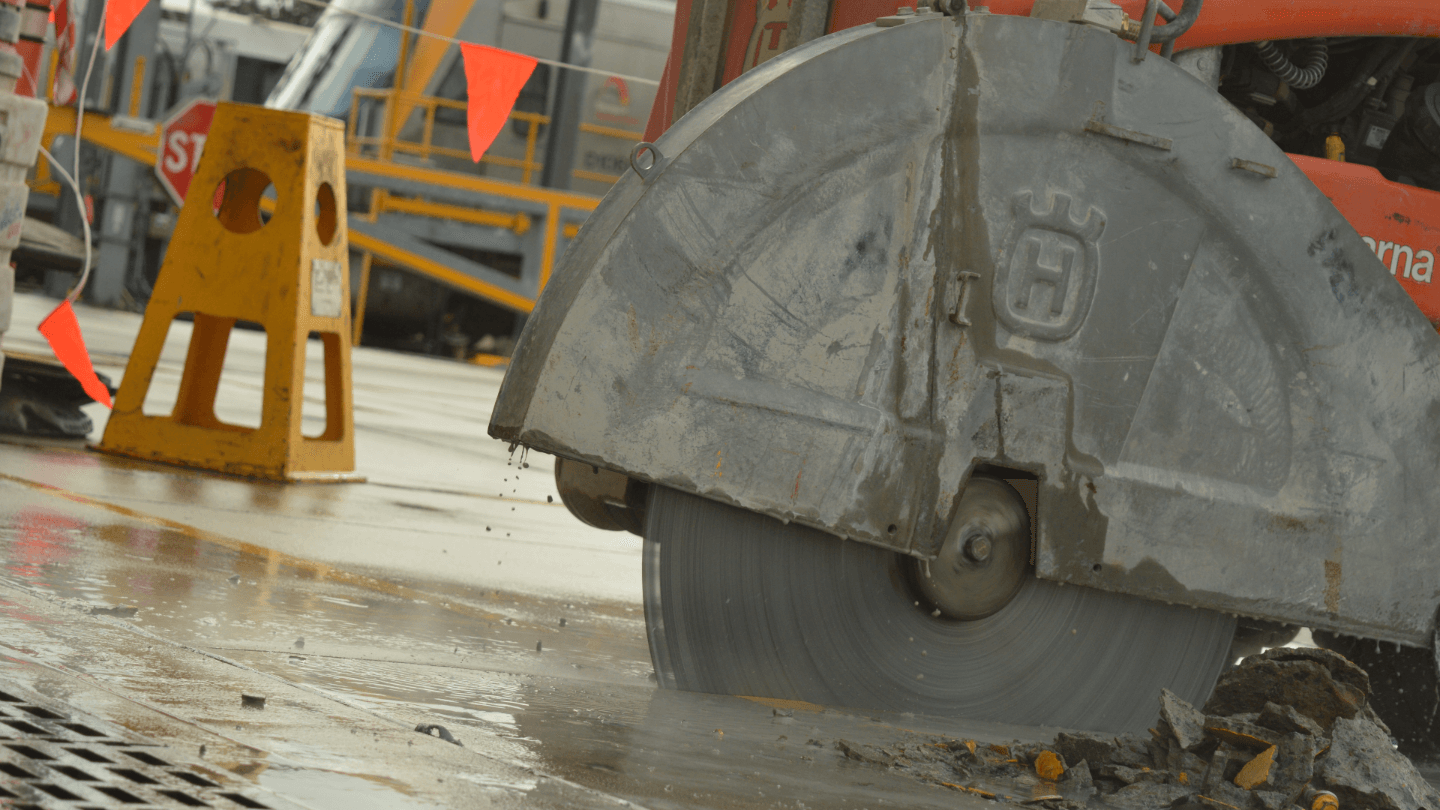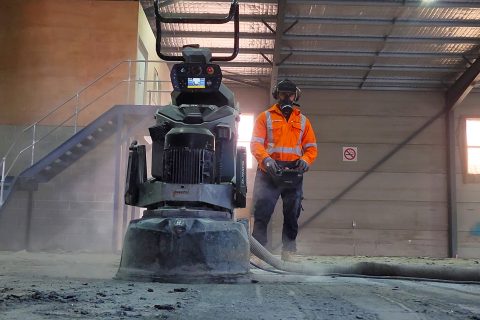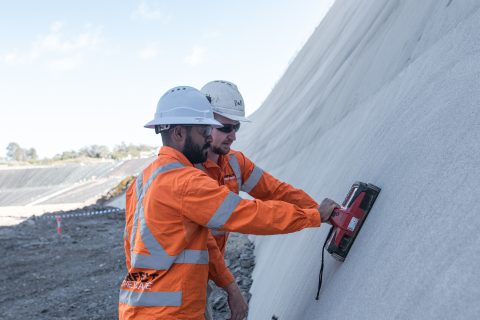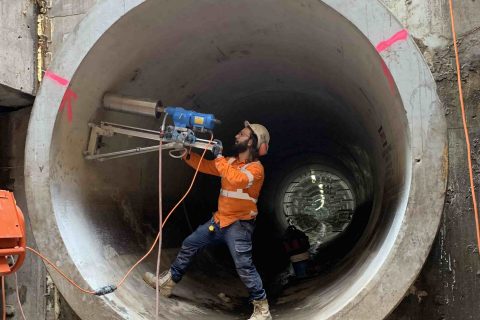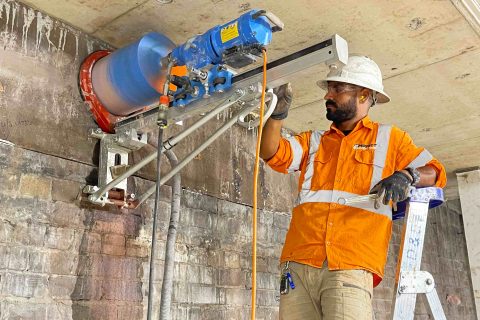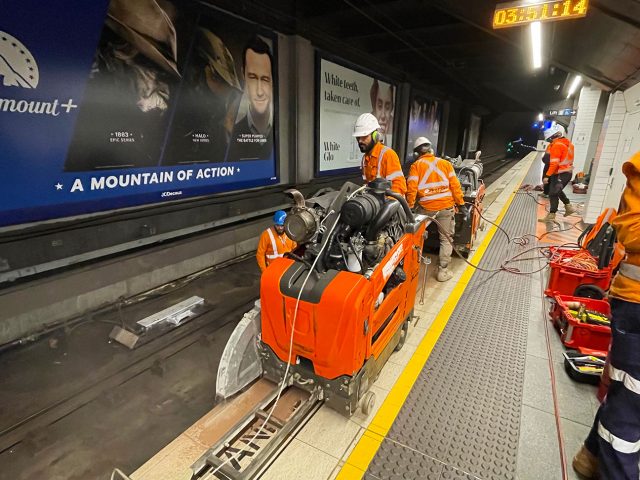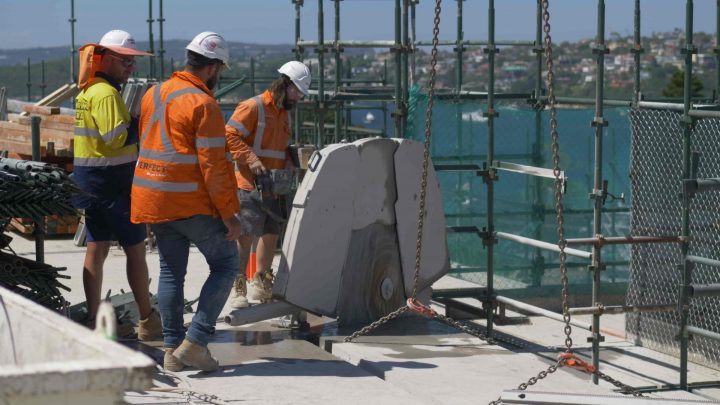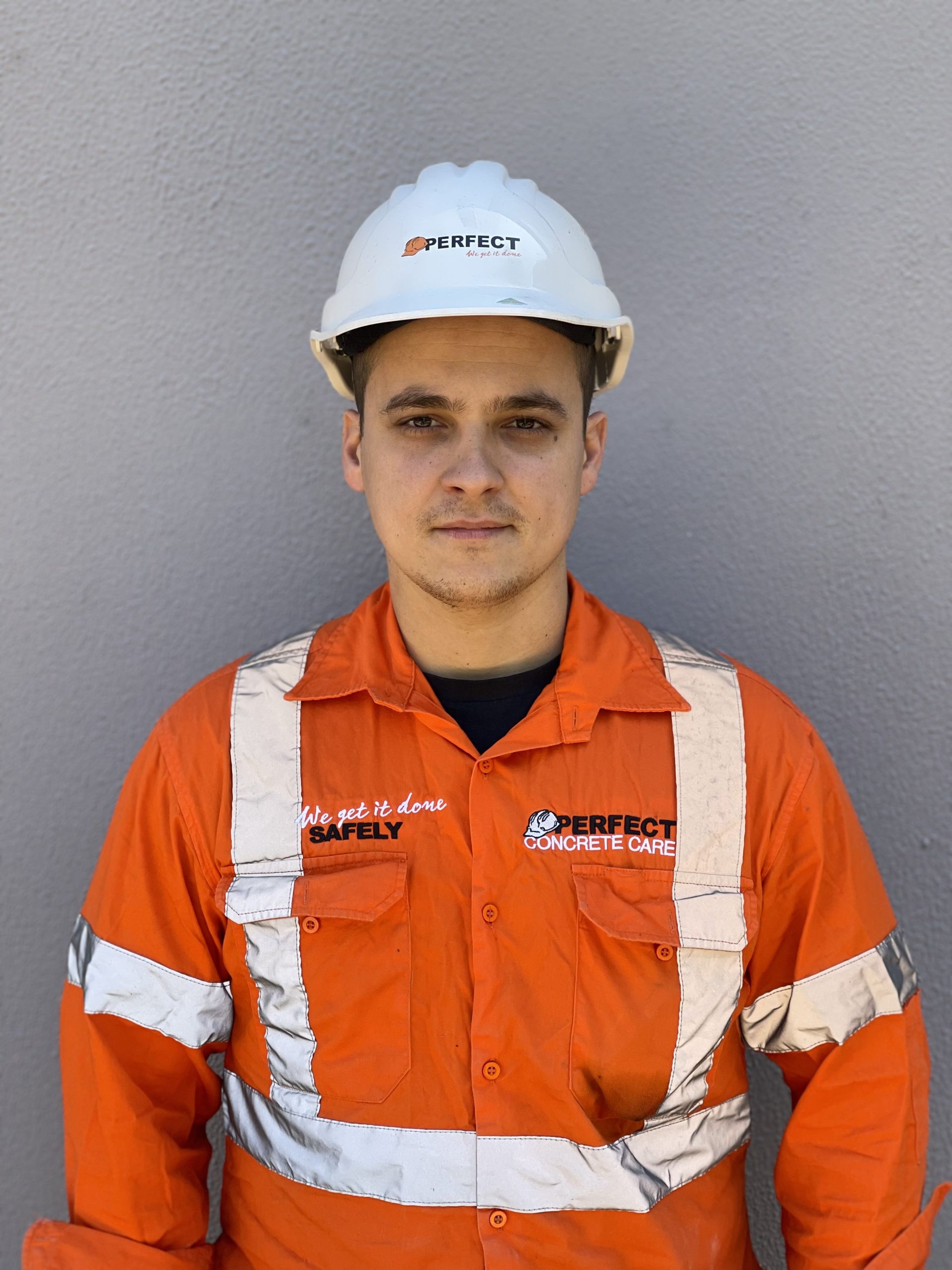By Daniel Green
Dissecting some of the most durable construction products known to man certainly presents some challenges. Not withstanding the carnage brought about by high explosives and jackhammers – precise concrete cutting equipment ranges from 5” grinders all the way to self-propelled, turbo-diesel behemoths capable of cutting slabs a foot thick! Known as road saws, these gargantuan masonry cutting machines are the apex predator of concrete cleaving. But with great size comes great responsibility so here’s Perfect Concrete Care’s 10+ Tips for Cutting Concrete with a Road Saw.
- Select the right equipment.
Road sawing isn’t for the faint-hearted. With a dry weight upwards of 450kg and blade speeds of 6000rpm, road saws will require all your attention and strength – not to mention transport and rental costs. With max cutting depths around the 300mm mark these beasts are best reserved for heavy duty cutting, meaning smaller or shallower cuts should be left to another machine – demo saw case-in-point. - Read the owner’s manual.
Gents – how many of us have ever actually read the instructions before we need to? This vital piece of literature is surprisingly handy and will in all likelihood save you time and money. Not to mention understanding what each and every switch and lever does. - Do full PPE.
Do full PPE but only if you want to stay safe. - Use correct and adequate coolant.
Cutting fluid is designed to both cool and lubricate the cut. The type will depend on the machine and the masonry. Unless you’re cutting exotic material water is sufficient – however it mustn’t be underused or there will be catastrophic consequences! A garden hose usually provides enough volume and pressure for most road sawing scenarios. - Never leave the saw unattended while running.
Needless to say, the torque required to cut twelve inches of solid concrete is pretty immense. Leaving this kind of power to its own devices can [and most likely will] end up in disaster. Road saws need the content eye of an experienced and trained operator. - Never run the machine without the blade guard.
There’s an old adage: ‘Engineers designed it that way for a reason’. Often that reason is to save you time, money and most importantly – injury. Even from a distance, a tiny piece of material caught up in the spinning blade of a road saw because it didn’t have the blade guard – can end up nasty. - Always use the correct blade.
Choosing the correct cutting disc is one of the most crucial factors in executing a successful cut. Not only does the type of masonry play a factor, but the depth of the cut as well. The extra time spent changing discs will save you in the long run. - Power down the machine when changing blades.
We all know machinery is not perfect. Sometimes it does things that it shouldn’t. We don’t want one of those things to be self-starting during a blade change operation. Hit the E-stop, turn the key off and pull it out. Even let it cool down so it doesn’t pre-combust. - If it doesn’t fit, don’t force it.
Changing road saw blades and other general work requires a degree of mechanical know-how. This includes knowing when to ‘persuade’ something in place and when not to. Changing cutting discs is a great example. Road saws send drive power to the ground via a locating pin in the disc. If things don’t line up, aren’t square or simply don’t fit properly – don’t force them! Imagine an improperly fastened 650mm steel disc coming loose at 6000rpm. - A clean machine is a keen machine.
Regular cleaning, lubrication and maintenance allows the operator to learn about their road saw in a meaningful way. Over time they learn the quirks of certain machines, how to get around them and what to do in the event of a fault. - Do not shut down the engine whilst on a grade.
..unless the wheels are chocked. The self-propelled part of its name means some of road saw’s engine output is directed to driving it. With a 450kg dry weight this design feature is a godsend, especially when you’ve paused mid-cut on an uphill gradient. Shutting the engine down however may free up the drive mechanism to the point of free-rolling. Installing chocks onto your road saw That are always within easy reach is a great workaround for this. - Stand aside during startup.
Due to the force require to turn a 12” blade through cured concrete to 6000rpm, its advised that starting the engine on a road saw be done with the operator off to the side and as far back as possible. - If it stalls, stop.
Sometimes during the cut the blade can stall. There’s many reasons from encountering something unexpected in the slab to not enough engine speed or both. If this does occur, extract the blade and check for damage. Also make sure it’s still firmly secured. In such high torque conditions it’s not uncommon for a blade to become loose or damaged during a stall event. - Be precise when starting or resuming a cut.
Cutting masonry in an arc [‘or turning corners’] with a road saw is difficult. It is designed for straight cuts only. When first starting a cut be sure the blade is correctly aligned to the cut marks. It is far easier to correct a crooked cut before you sink the blade in – than after. The same goes for resuming a cut. - Do not exert side pressure on the blade.
Everything has a tolerance but generally speaking, trying to change direction mid-cut will result in machine damage, a terrible cut or both. Side-loading a hub designed for top loading will destroy critical components costing both you and the client valuable time and money. - Do not overrun the engine.
That specific combination of engine output, blade speed and cutting resistance [the material being cut] was calculated and recalculated over several years by men and women far smarter than us. It is the perfect balance of power and reliability. Working the machine outside its designed scope will only yield expensive repairs. - Do not disable any safety features.
Bypassing vital components like E-stops and deadman controls is not only unwise, its also illegal. Leave them as they are.
Get Cutting!
So there you have it. 18 of the best road saw cutting tips this side of a diamond blade. If you’d like the advice of a concrete care professional then please contact Rodrigo from Perfect Concrete Care on 0481 231 493.
We Get It Cut!

